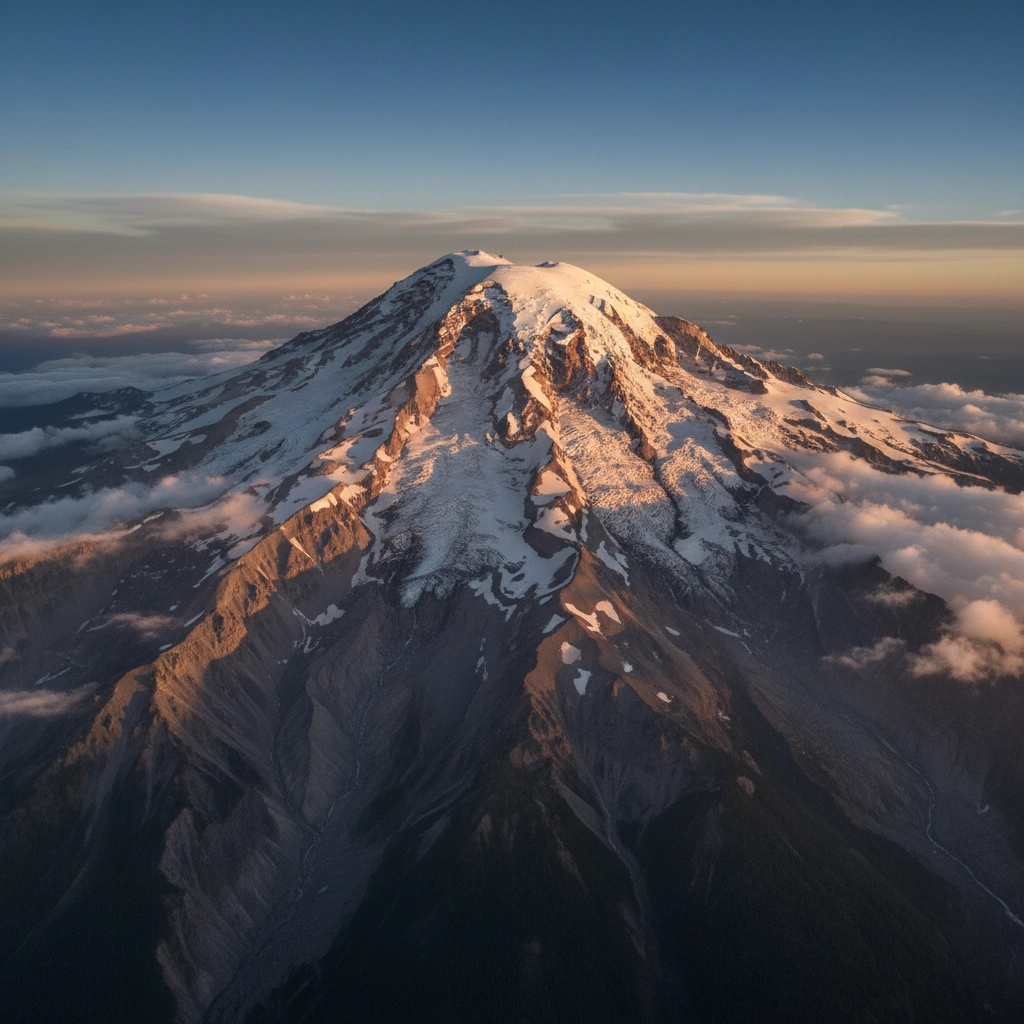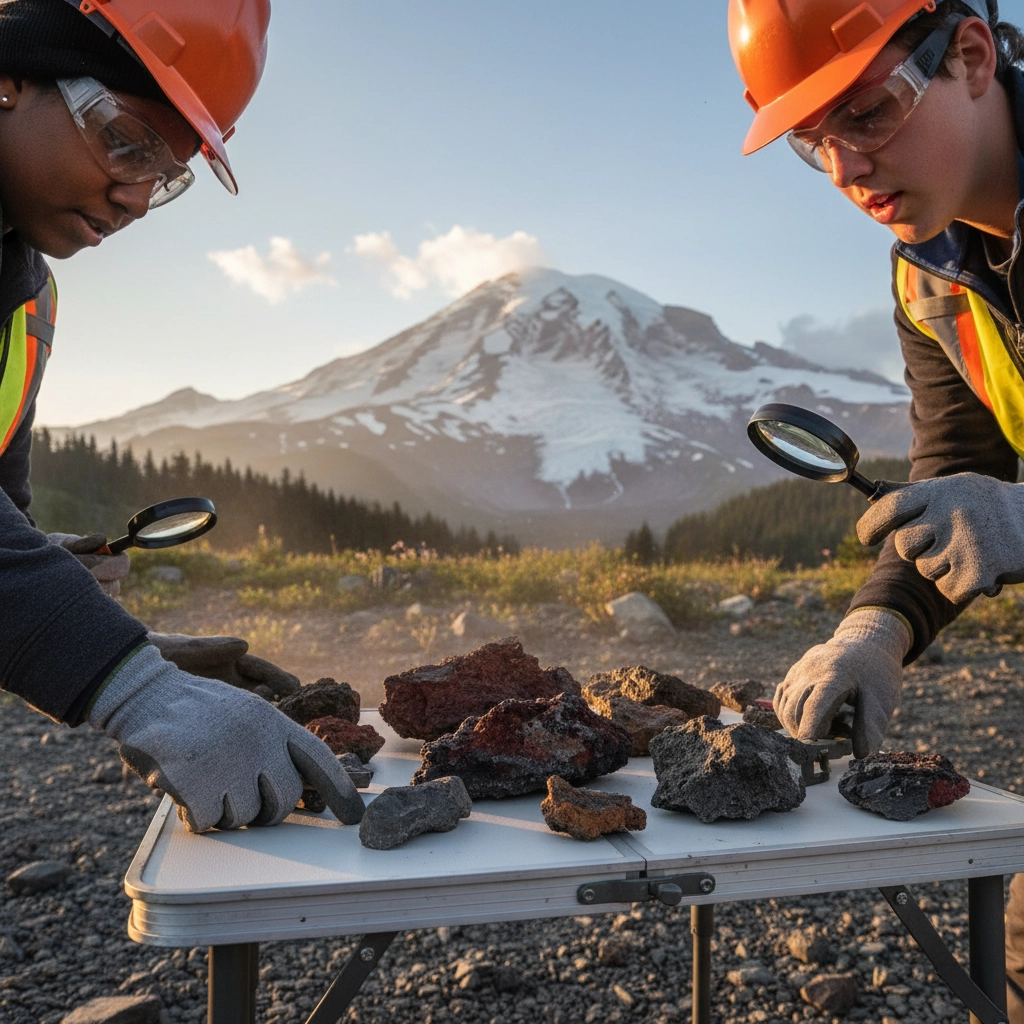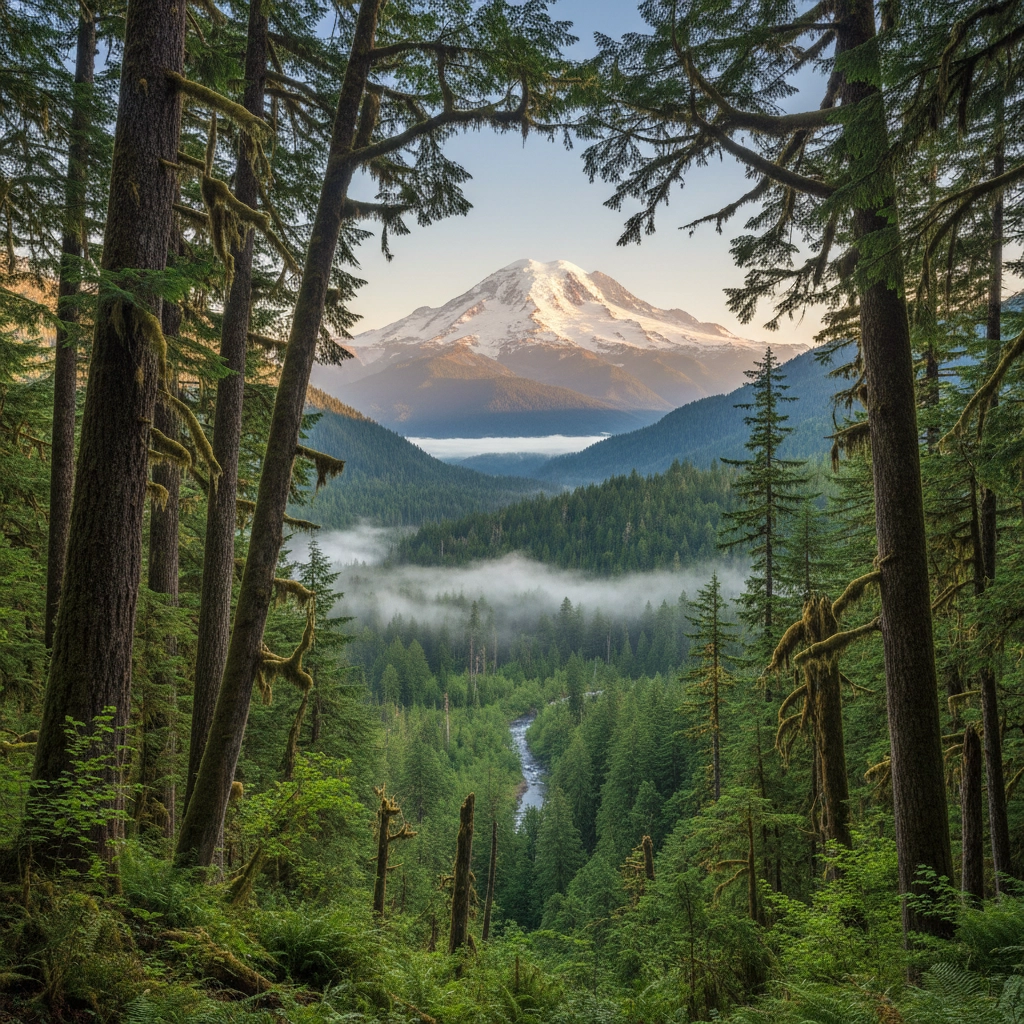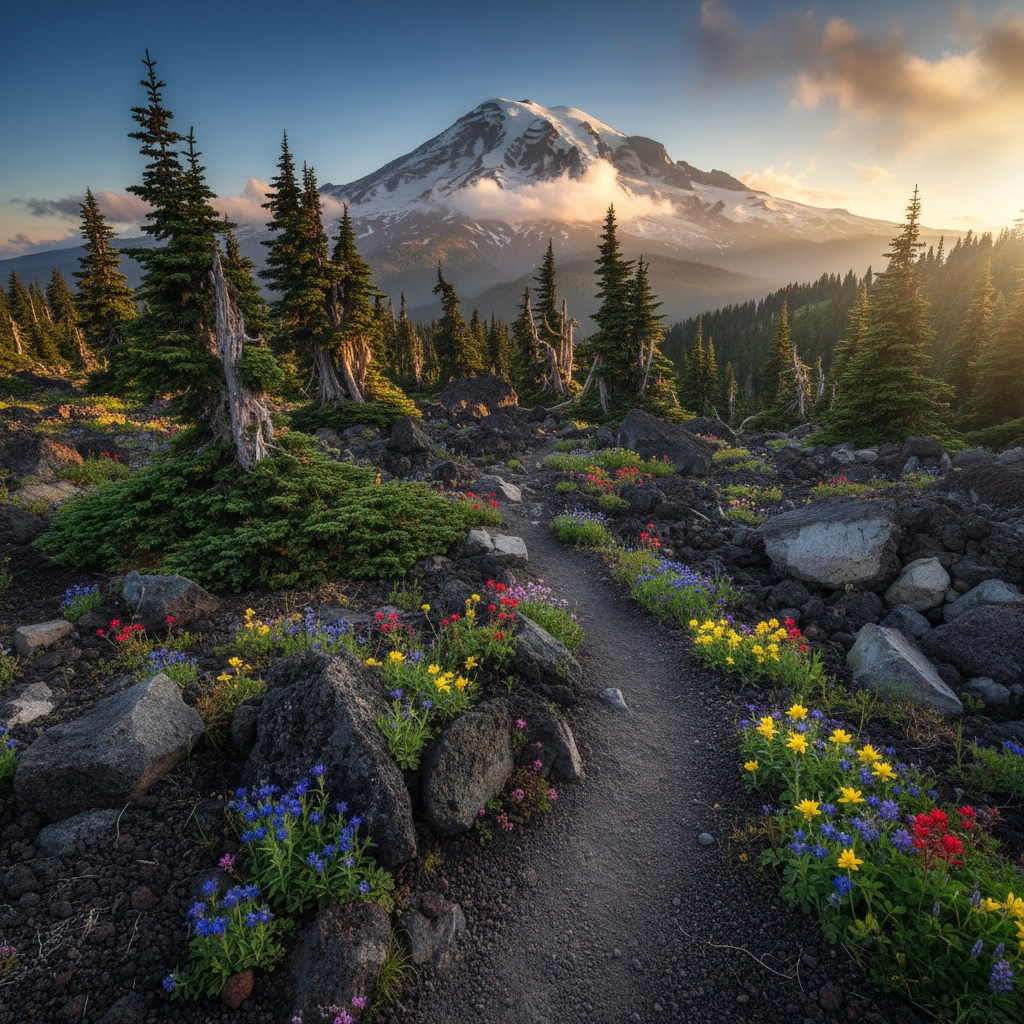Volcanoes and Earth Science: Exploring Mount Rainier's Explosive History with Students
- Caleb Mullenix
- Oct 21
- 5 min read
Establishing a comprehensive understanding of volcanic processes and earth science fundamentals requires direct engagement with active geological systems. Mount Rainier presents an exceptional opportunity for students to explore volcanic formation, hazard assessment, and the dynamic relationship between geological forces and Pacific Northwest ecosystems. This stratovolcano serves as a living laboratory where students can examine 500,000 years of geological history while developing critical thinking skills essential for future earth scientists.
Understanding Mount Rainier's Volcanic Foundation
Mount Rainier stands as one of the most compelling examples of stratovolcano formation in North America. Scientists classify this massive peak as an active volcano based on four critical criteria: its position on an active subduction zone, ongoing seismic activity beneath the volcanic structure, an active hydrothermal system, and recent eruptions within geological timeframes.
The volcano's most significant eruption occurred approximately 1,000 years ago, producing a catastrophic lahar that traveled down the Puyallup River Valley and reached Puget Sound. This event deposited volcanic materials across vast areas of what is now densely populated western Washington, creating geological evidence that students can observe and analyze during field investigations.
Unlike Mount St. Helens, which consists primarily of explosive pyroclastic materials, Mount Rainier represents a composite volcano built through hundreds of andesite lava flows interbedded with layers of ash and pumice. This complex geological composition provides students with opportunities to examine different volcanic processes and understand how various eruption styles create distinct geological formations.

Designing Effective Field Study Programs
Creating meaningful educational experiences at Mount Rainier requires careful planning and structured learning objectives. Begin by establishing clear goals for student understanding, focusing on volcanic hazard recognition, geological time scales, and the relationship between volcanic activity and ecosystem development.
Implement the Mount Rainier Timeline Activity, developed specifically for grades 6-12, where students work collaboratively to visualize 10,000 years of volcanic history on a three-meter timeline. Students create paper rulers representing an average human lifespan of 80 years and position them on the timeline to comprehend the temporal scale of volcanic events. This hands-on approach helps students understand that volcanic hazards operate on different timescales than human experience typically encompasses.
Organize students into research groups to examine specific aspects of volcanic monitoring and hazard assessment. Assign teams to investigate seismic monitoring systems, gas emission measurements, and ground deformation detection methods currently employed by the Pacific Northwest Seismic Network and United States Geological Survey.
Integrating Conservation Science with Geological Studies
Enhance student understanding of ecosystem interactions by incorporating conservation work with organizations like Farmer's Frog during Mount Rainier expeditions. Students can participate in native species restoration projects while observing how volcanic soils influence plant communities and wildlife habitat development.
Establish connections between geological processes and ecological systems by examining how volcanic activity creates diverse microhabitats supporting unique plant communities. Students should document soil composition variations, observe succession patterns on different-aged volcanic deposits, and analyze how geological diversity contributes to biodiversity preservation.
Create opportunities for students to engage in citizen science projects that monitor environmental changes related to volcanic activity. Students can collect water quality data from streams flowing from Mount Rainier's glaciers, document plant species distribution patterns, and observe wildlife behavior in areas influenced by geothermal activity.

Exploring Alpine Forest Ecosystems
Mount Rainier's elevation gradient provides exceptional opportunities for students to examine how geological processes influence forest ecosystem development. Guide students through systematic observation of forest community changes as elevation increases, connecting these patterns to volcanic soil development, climate variations, and geological substrate differences.
Establish study plots at different elevations where students can measure and record tree species composition, diameter measurements, and forest health indicators. Students should document how volcanic ash deposits influence soil chemistry and examine how these changes affect plant community structure and wildlife habitat quality.
Encourage students to investigate adaptation strategies employed by alpine plants surviving in harsh conditions created by volcanic activity. Students can examine plant morphology, root system development, and reproductive strategies that allow species to thrive on volcanic slopes subject to rockfall, debris flows, and extreme weather conditions.
Rainforest Ecology Connections in Olympic National Forest
Expand student understanding of Pacific Northwest ecosystems by incorporating Olympic National Forest rainforest studies into Mount Rainier expeditions. Students can compare and contrast ecosystem development on volcanic versus sedimentary substrates, examining how different geological foundations influence forest structure and species composition.
Design comparative studies where students document rainfall patterns, soil development, and plant community characteristics in both volcanic and temperate rainforest environments. Students should analyze how geological differences influence water retention, nutrient cycling, and habitat diversity across these contrasting landscapes.
Create opportunities for students to participate in ongoing research projects examining climate change impacts on both volcanic and rainforest ecosystems. Students can contribute to long-term datasets while developing skills in scientific methodology, data collection, and environmental monitoring techniques.

Volcanic Hazard Assessment and Community Preparedness
Develop student understanding of volcanic hazard assessment by examining current monitoring systems and emergency preparedness protocols. Students should analyze hazard maps, interpret seismic data, and understand how scientists detect early warning signs of renewed volcanic activity.
Implement exercises where students evaluate infrastructure vulnerability and develop community preparedness recommendations. Students can examine transportation networks, communication systems, and evacuation procedures while understanding how scientific knowledge informs public safety decisions.
Encourage students to investigate the societal impacts of volcanic activity, examining how communities balance development pressures with hazard mitigation requirements. Students should analyze case studies of volcanic emergencies and evaluate the effectiveness of different preparedness strategies.
Safety Protocols and Risk Management
Establish comprehensive safety protocols before conducting any field work near Mount Rainier. Ensure all participants understand weather hazards, rockfall risks, and appropriate emergency procedures. Develop detailed emergency communication plans and verify that all supervisory staff possess current wilderness first aid certifications.
Review current volcanic alert levels and aviation color codes before departure, adjusting itineraries if necessary based on scientific recommendations. Maintain regular communication with National Park Service personnel and monitor updates from the Cascades Volcano Observatory throughout the expedition period.
Prepare students for altitude-related challenges and ensure appropriate physical conditioning requirements are met before departure. Establish clear guidelines for group management, emergency evacuation procedures, and communication protocols with base operations.

Assessment and Learning Evaluation
Create multiple assessment opportunities that allow students to demonstrate understanding through various formats. Design field notebooks where students document observations, sketch geological formations, and record measurement data throughout the expedition period.
Develop presentation assignments where student groups share findings about specific aspects of Mount Rainier's geological history, current monitoring systems, or ecosystem interactions. Encourage students to connect field observations with broader scientific concepts and explain how volcanic processes influence regional development patterns.
Implement reflection activities where students evaluate their understanding of geological time scales, hazard assessment procedures, and the relationship between scientific knowledge and community preparedness efforts. Students should demonstrate ability to communicate scientific concepts clearly and explain the relevance of volcanic monitoring to public safety.
Long-term Educational Impact
Mount Rainier expeditions provide students with foundational experiences that influence career interests and environmental awareness throughout their lives. Students develop appreciation for scientific methodology, understand the importance of long-term environmental monitoring, and recognize their potential roles as informed citizens capable of understanding and responding to geological hazards.
Encourage students to maintain connections with ongoing research projects and consider how their field experiences might influence future academic and career decisions. Students should understand that their participation in Mount Rainier studies contributes to broader scientific understanding while developing skills essential for addressing environmental challenges facing Pacific Northwest communities.
These comprehensive field experiences ensure students develop both scientific knowledge and practical skills while fostering deep appreciation for the dynamic geological processes that continue shaping the Pacific Northwest landscape. Through careful preparation, structured learning activities, and emphasis on safety protocols, Mount Rainier expeditions create transformative educational experiences that inspire lifelong learning and environmental stewardship.



Comments